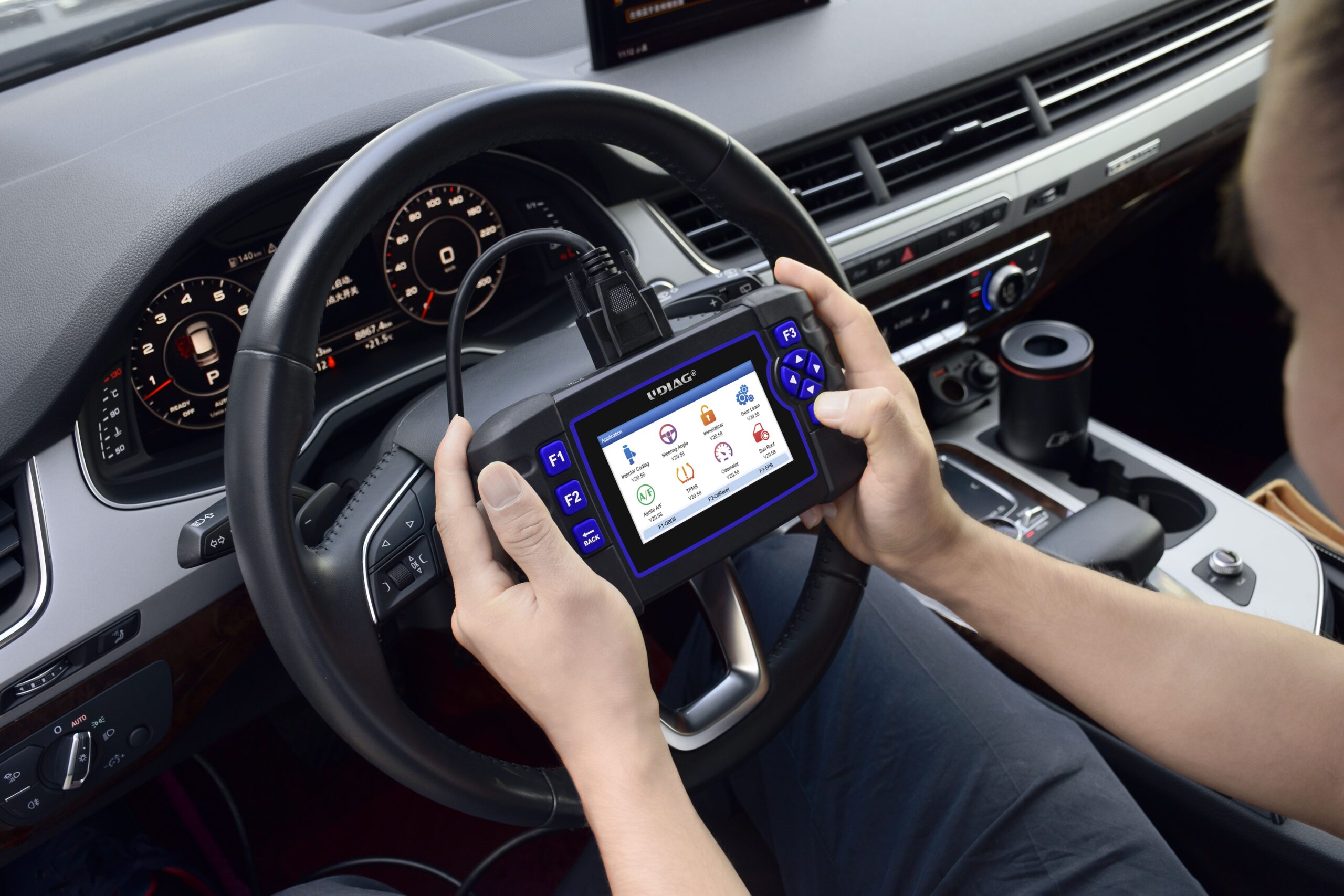How does an OBD2 scanner read SRS codes.
2023-08-16 by UDIAG
 In the world of modern automotive technology, the safety of drivers and passengers is of paramount importance. The Supplemental Restraint System (SRS), encompassing airbags and other vital safety components, plays a critical role in safeguarding lives during accidents. One of the key tools used to monitor and diagnose issues within a vehicle’s SRS is the On-Board Diagnostics 2 (OBD2) scanner. This essay delves into the intricate process of how an OBD2 scanner reads SRS codes, shedding light on the symbiotic relationship between these technologies.
In the world of modern automotive technology, the safety of drivers and passengers is of paramount importance. The Supplemental Restraint System (SRS), encompassing airbags and other vital safety components, plays a critical role in safeguarding lives during accidents. One of the key tools used to monitor and diagnose issues within a vehicle’s SRS is the On-Board Diagnostics 2 (OBD2) scanner. This essay delves into the intricate process of how an OBD2 scanner reads SRS codes, shedding light on the symbiotic relationship between these technologies.
I. Understanding OBD2 Systems
At the heart of vehicle diagnostics lies the OBD2 system, an industry-standard protocol designed to provide insights into a vehicle’s performance and functionality. Comprising the Electronic Control Unit (ECU), sensors, actuators, and diagnostic trouble codes (DTCs), the OBD2 system communicates via standardized ports and connectors. This standardized communication allows OBD2 scanners to interface with various vehicle systems, including the SRS.
II. SRS and its Functionality
The SRS, an integral part of modern vehicles, is a comprehensive safety network responsible for deploying airbags and activating seatbelt pretensioners during collisions. Comprising components like airbags, crash sensors, and control modules, the SRS acts as a second layer of protection for occupants. This system, which operates behind the scenes during normal driving, springs into action when the vehicle detects an impending collision, mitigating potential injuries.
III. OBD2 Scanners and SRS Codes
OBD2 scanners serve as diagnostic tools capable of accessing a vehicle’s internal systems and retrieving critical data. While initially designed for engine diagnostics, many modern OBD2 scanners have evolved to incorporate SRS capabilities. These scanners possess the compatibility to communicate with SRS systems, allowing technicians and users to retrieve SRS-specific DTCs and information.
IV. Process of Reading SRS Codes
The process of reading SRS codes using an OBD2 scanner involves a series of steps. First, the scanner is connected to the vehicle’s OBD2 port, typically located underneath the dashboard. Once connected, the user initiates the diagnostic process through the scanner’s interface. The scanner communicates with the vehicle’s ECU and SRS module, retrieving stored SRS codes and associated data. These codes are standardized and provide insights into the nature of the issue. Depending on the scanner’s capabilities, users may also have the option to clear SRS codes after diagnosing and addressing the problem.
V. Common SRS Issues and Solutions
SRS codes can indicate a range of issues, including faulty sensors, wiring problems, or malfunctioning airbags. By interpreting these codes, technicians can pinpoint the root cause of the problem and propose suitable solutions. For instance, if a sensor malfunction code is detected, it might indicate a faulty crash sensor that needs replacement. Addressing these issues promptly is essential not only for maintaining vehicle safety but also for adhering to legal regulations and preserving resale value.
VI. Importance of Addressing SRS Codes
Neglecting SRS codes can have severe safety implications. Ignoring malfunctioning airbags or other SRS components could compromise passenger safety in the event of an accident. Furthermore, regulatory standards mandate that vehicles meet certain safety requirements, and non-compliance due to unresolved SRS issues could lead to legal consequences. Additionally, potential buyers often scrutinize a vehicle’s history, and a well-maintained SRS system could positively impact resale value.
Conclusion
The synergy between OBD2 scanners and the SRS system exemplifies the technological advancements driving vehicle safety. OBD2 scanners empower users and technicians to delve beneath the surface and diagnose SRS-related issues accurately. By understanding how an OBD2 scanner reads SRS codes, we underscore the significance of maintenance, safety awareness, and the imperative role these tools play in enhancing overall road safety. As we continue to harness the power of technology, the marriage of OBD2 systems and SRS capabilities stands as a testament to our commitment to safer journeys.


